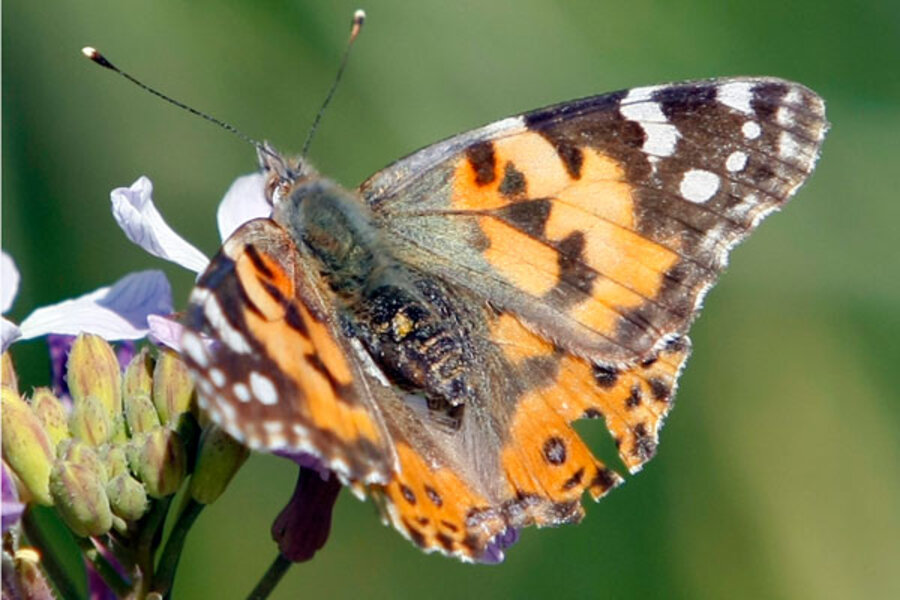California butterflies having a tough time
Loading...
Butterflies are among the most popular insects. Practically everyone enjoys seeing the colorful creatures flit among flowers to feed on nectar and pollen. But life isn't necessarily easy for a butterfly: Maximum expected lifespan ranges from four days to 11 months. And the Monitor recently reported that many trees in the monarch butterfly's winter home in Mexico are being killed by bark beetles.
More bad news for butterflies arrived this week from Arthur Shapiro, a professor of evolution and ecology at the University of California, Davis. Drawing on his unique 35-year database of twice-a-month observations at 10 sites at various elevations – from sea level to tree line – in north-central California, "we found many lowland species are being hit hard by the combination of warmer temperatures and habitat loss," said the butterfly expert.
The 10 survey sites lie along Interstate 80 and range from low-lying Suisun Marsh on San Francisco Bay to 9,103-foot-high Castle Peak near Donner Summit.
The analysis, to be published online this week in the journal Proceedings of the National Academy of Sciences, concludes that the number of different species of butterflies (diversity) is falling at the sea-level sites and beginning to fall at high elevations as temperatures become too warm for the butterflies that normally live there.
Only at the tree line had the number of species increased. There, "butterfly diversity is actually going up, as lower-elevation species react to the warming climate by moving upslope to higher, cooler elevations," the research team reported.
Lowland species were also being hit hard by habitat loss due to development. Losses were greatest where land was converted from rural to suburban or urban uses.
One of the most surprising findings from the analysis is that "ruderal ('weedy') butterfly species that breed on 'weedy' plants in disturbed habitats and are highly mobile are actually declining faster than 'non-weedy' species -- those that specialize in one habitat type, Dr. Shapiro said:
This is especially true in the mountains, where such species do not persist over winter but must recolonize every year from lower altitudes. As their numbers drop in the valleys, fewer are available to disperse uphill, and the rate of colonization drops.
"Butterfly folks generally consider these ruderal species to be 'junk species,' sort of the way bird watchers think of pigeons and starlings," said Shapiro. "So it came as a shock to discover that they were being hit even harder than the species that conservationists are used to thinking about.
"Some of the 'weedy' species have been touted as great success stories, in which native butterflies had successfully adapted to the changed conditions created by European colonization of California. That was the case for many decades, but habitat loss has apparently caught up with them now."
Editor’s note: The Monitor's Environment section has a new URL. And there's also a new URL for our Bright Green blog. We hope you'll bookmark these and visit often.





